Thought you didn’t want an Orange Five. Chipps reckons that this top spec model might just change your mind…
Orange Bikes has been around since the end of the 1980s, making the company nearly as old as UK mountain biking itself. Although starting with classic hardtails like the Clockwork, by the mid-90s, Orange was experimenting with full suspension, with the original Sub Five coming out at the end of the 90s. This was further refined to become the Orange Five – one of the most enduring designs in British mountain biking. While it’s a frame has has been around for years, it has been continually tweaked by Orange to reflect both riding styles and the technology available to Orange in tube shaping and component machining.
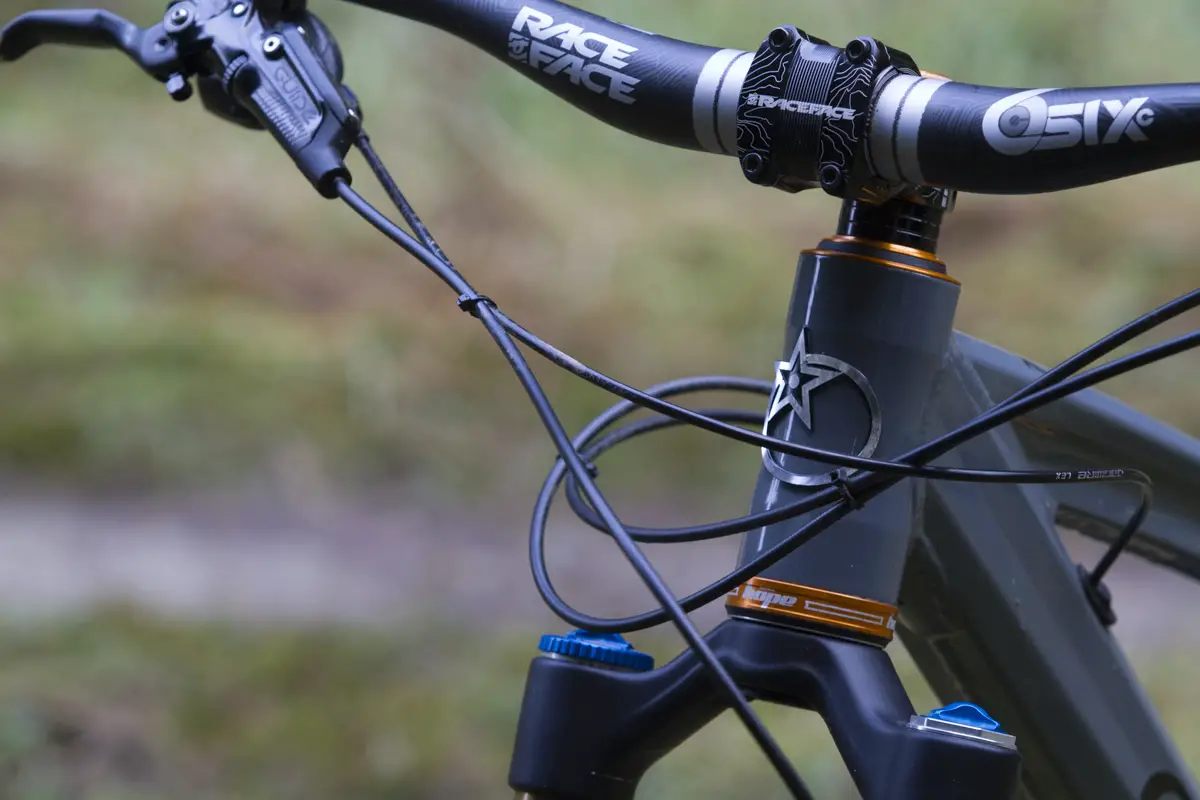
It was said (probably by me, come to think of it) a few years ago, that any rider who wanted an Orange Five, probably had one by that point – and given the relative durability of the bikes, it seemed that Orange had built itself into a corner. However, along came the recent rapid developments in wheel sizes, axle widths and in geometry.
Orange has always shied away from going down the carbon route (or rather, it has looked at it and asked ‘Yes, but what would we build? Given that we’d have to commit to selling thousands of them to recoup the mould costs’) and so it has been able to relatively quickly move with the times – coming out with 142mm back ends, 27.5in compatibility and now, this new Five, with Boost hub widths, a long/slack modern geometry and a ride that is a million miles from the bobby attitude of that original Sub5 (I would know as I bought one in 1999…)
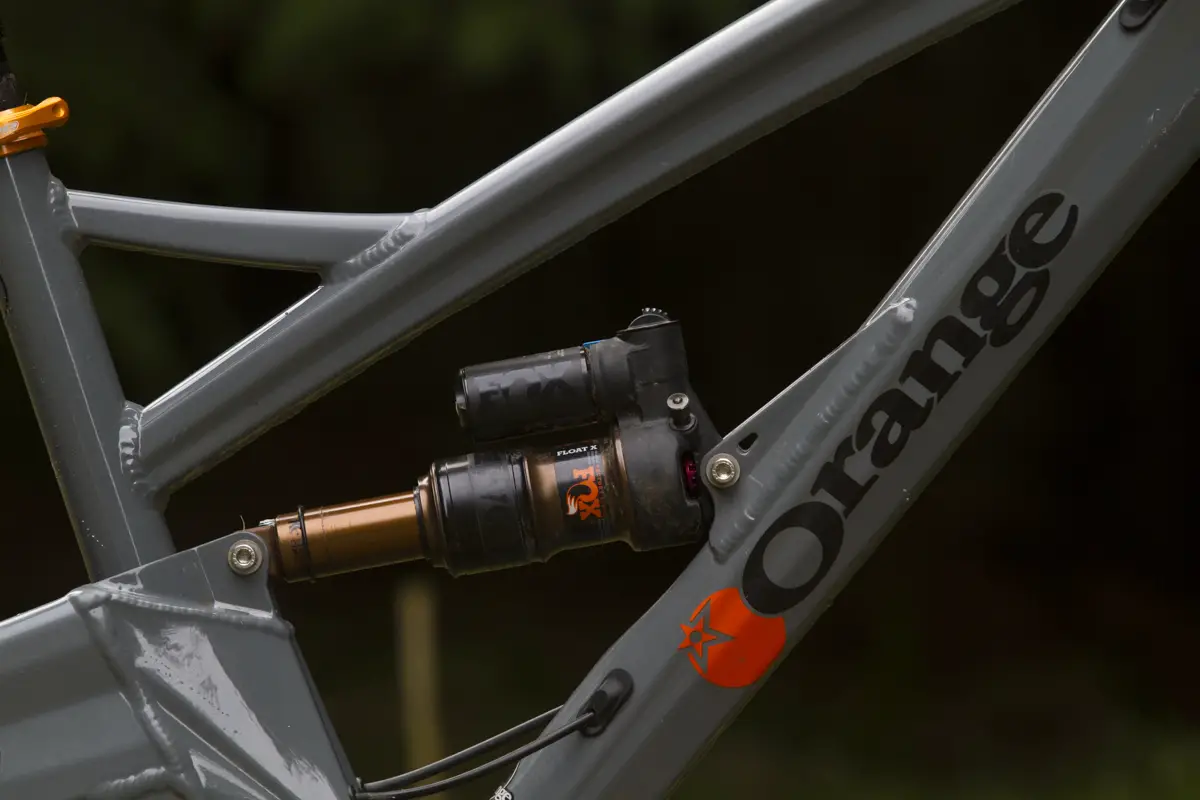
First revealed last year in July during the Orange 2017 model launch, the latest edition of the Five has brought with it several key updates that have pushed up the performance bar yet again. It was launched at the same time alongside the latest revisions of the two bikes that bookend the Five in the Orange range; the 120mm travel Four, and the 160mm travel Alpine 6. All three models use 27.5in wheels, the same single-pivot suspension design, and tough welded alloy frames.
While the Five has always occupied the long-travel trail bike space within the Orange lineup, it’s no doubt starting to encounter some overlap from within its own ranks. Since the launch of the new Five, two 29in full suspension bikes have joined the range as well; the 135mm travel Stage 5, and the 150mm travel Stage 6.
With just 40mm of rear wheel travel separating five different models in the Orange full suspension lineup, you can understand if the Five is feeling somewhat claustrophobic…
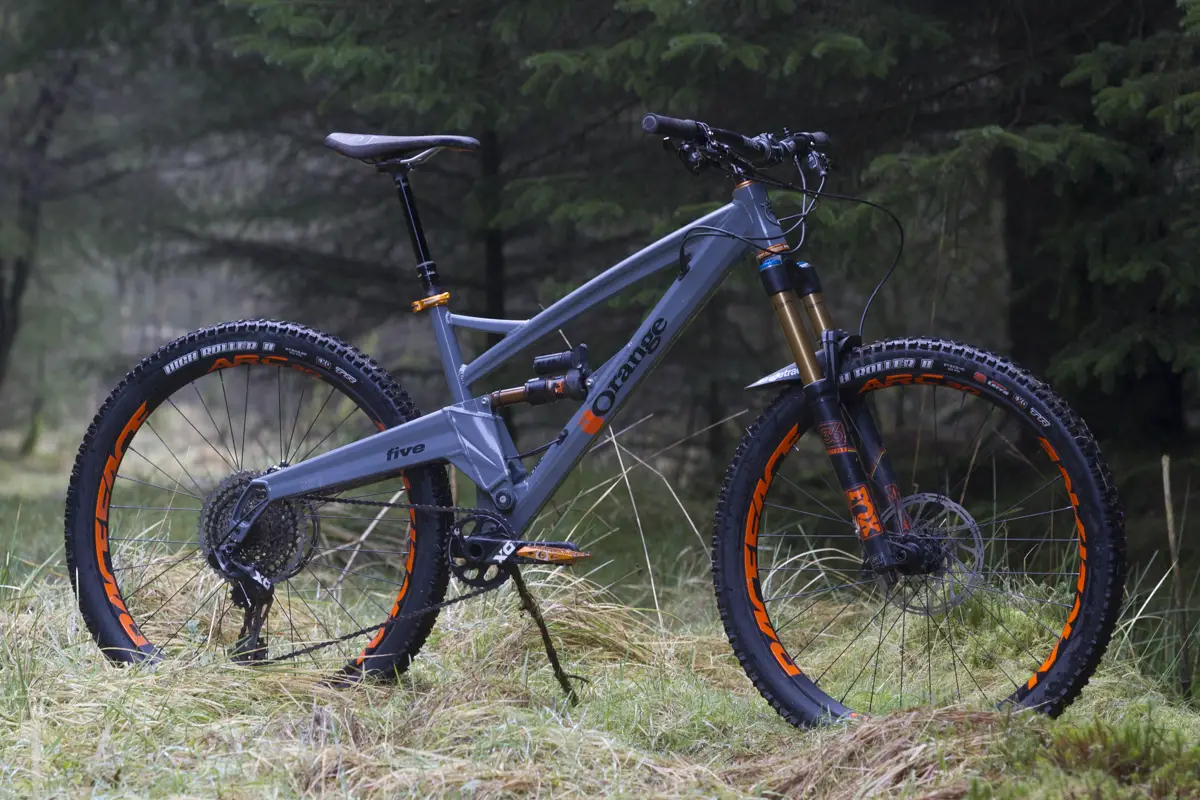
Orange Five Features
- Full suspension 27.5in trail bike
- Made in Britain
- 6061-T6 aluminum monocoque frame
- 140mm rear travel
- Single pivot suspension design
- Designed for 150mm travel forks
- 66° head angle
- 73mm English threaded bottom bracket
- ISCG 05 chainguide tabs
- Boost 148x12mm rear hub spacing
- 426mm chainstay length
- Internal routing for brake, gear and dropper post cabling
- Available sizes: X-Small, Small, Medium, Large, X-Large
- Frame RRP: From £1650
- Complete bike RRP: £2800 – £5400 (as tested)
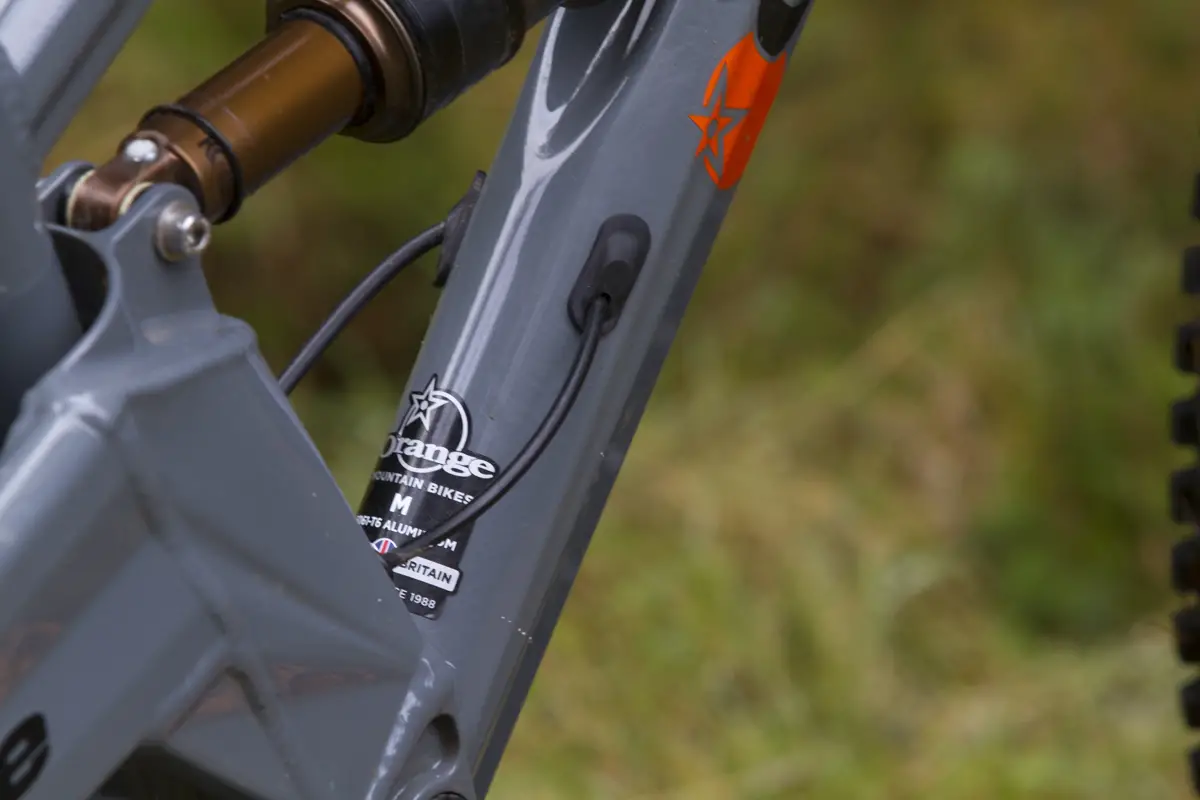
Halifax Born
The Five is still hand-built by tattooed, bollocks-talking thugs in Halifax and made in an engineering works. Not a pristine artisan bike-works, but a proper grubby, machining and welding place where things get built. This Five wasn’t hand-sculpted by a bearded craftsman in a shed, it was made (with care and a huge amount of pride) by a small team of welders who love their craft and who stand by their work, but who are engineers over bike riders. And that’s kind of how you want it, isn’t it? When you’re dropping into some vertigo-beast slither, you want to know that your bike is a welded whole, not some conceptual bike-shaped art, right?
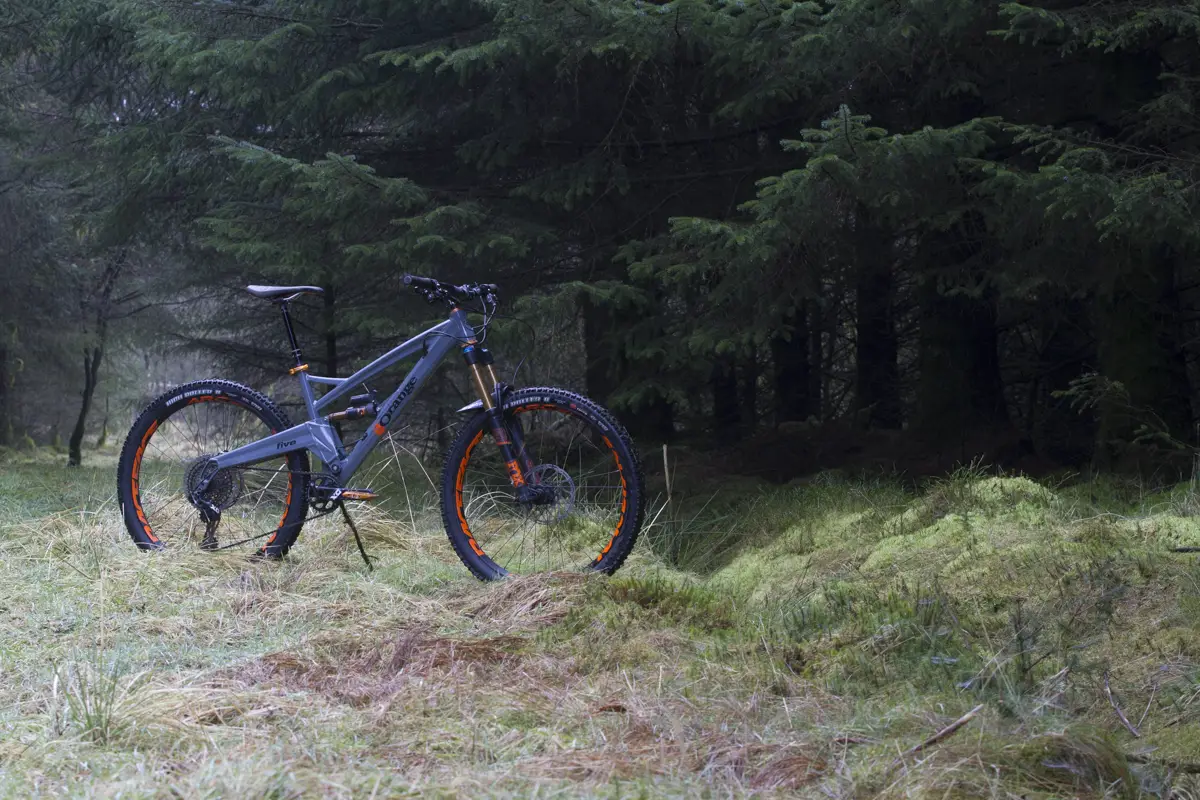
If it helps square things with your bike-as-beauty self, the frames are built into complete bikes by a small team of rabidly dedicated bike riders who are entirely in it because they love bikes and they want to make something so awesome that your riding experience will melt your face from the inside out…
The utilitarian Five comes in a few different builds, starting out from £2800 for the Five S, and ranging up to £5400 for the top-end Factory spec that we’ve got here. At that lower end, Orange’s bike-speccer works like a submarine captain, twisting valves and tapping dials. If you want a more expensive chainset, then you’ll have to have cheaper tyres – that kind of thing.
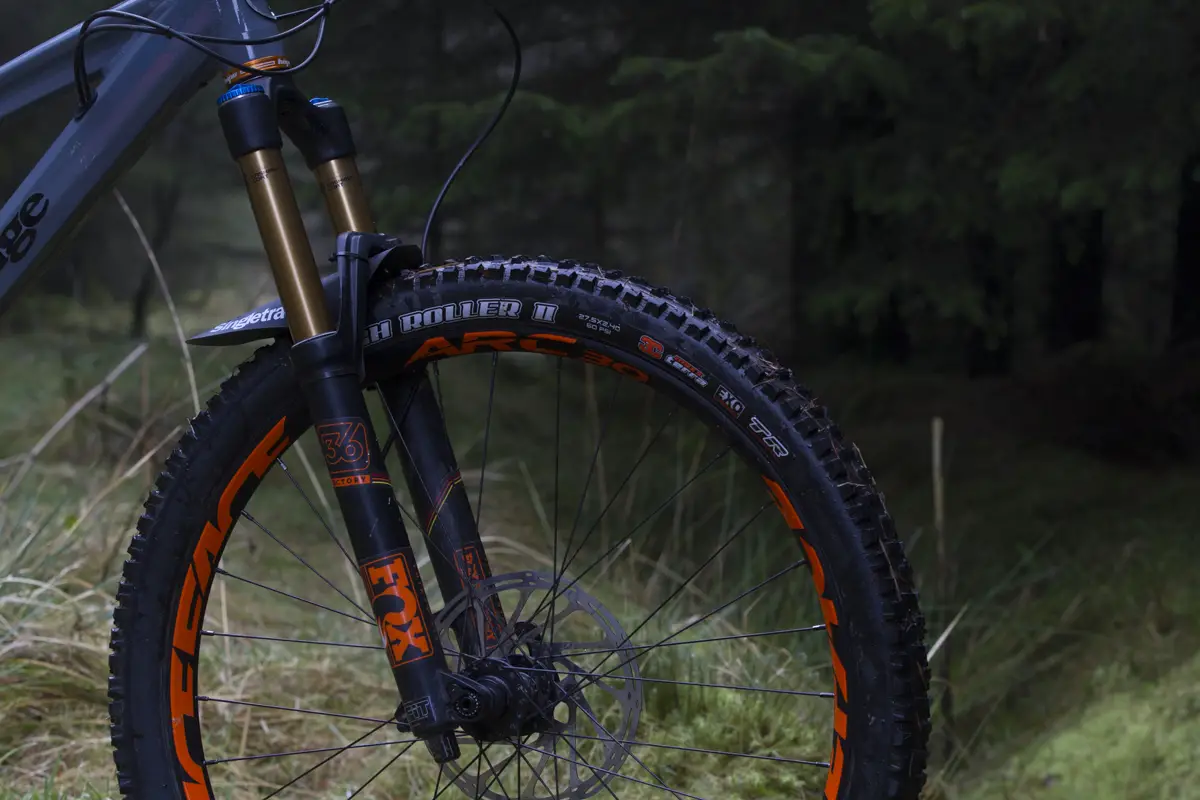
But this, the Factory spec, is what you imagine that the folks at Orange would choose for themselves. It goes beyond ‘functional machine’ into ‘something that taunts you from across the room to ride it’. Call it, if you will, the ‘bike journo’ spec.
What we have, is a solid and dependable bike, but with extra care taken on the bits of the bike that’ll transform it from ‘dull, but reliable’ into ‘oh yes, let’s do another lap’. It’s the Focus ST, the Shelby Cobra, the margarita Grand Cru.
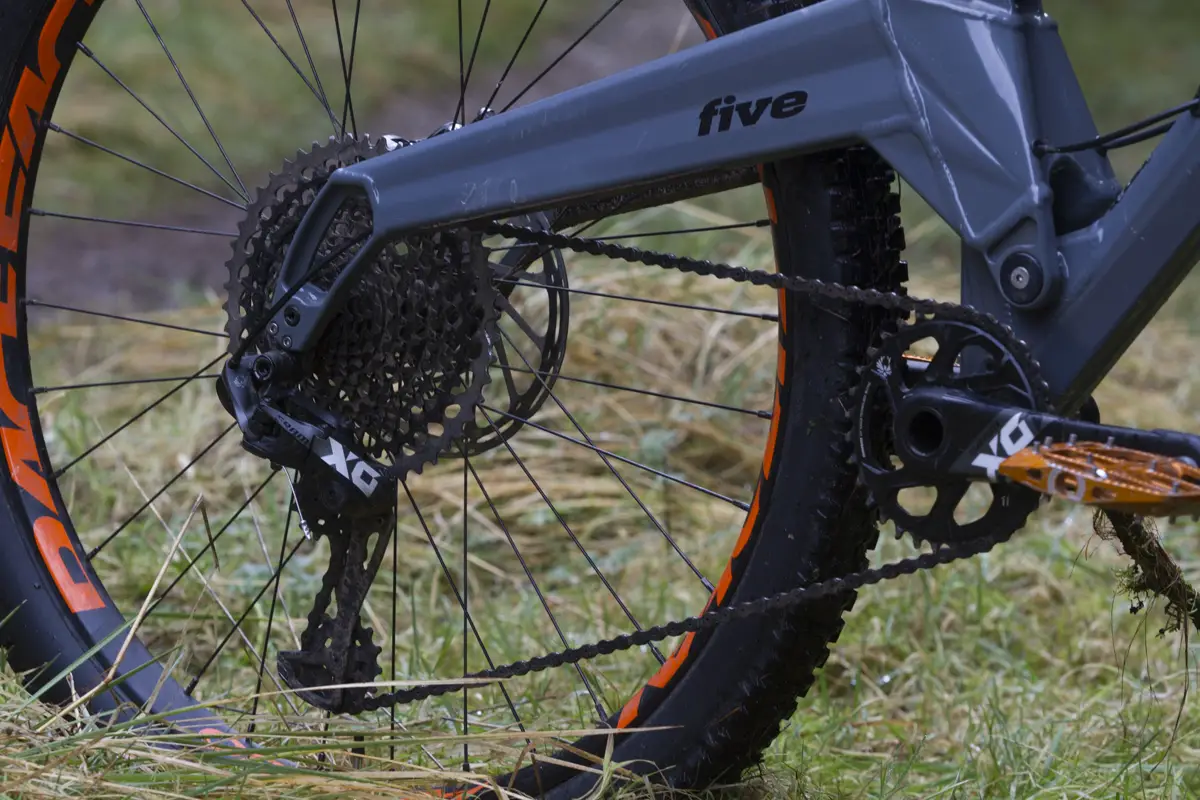
Orange has taken the workaday (and beautifully practical) Five frame and added frivolous things like Factory Series Fox suspension, in the form of a Fox 36 Float fork and a Float X rear shock that come complete with gold Kashima livery. In addition, given that the Five has dispensed with a front mech (this frame is 1x only folks), it is specced with the best one-by groupset currently out there; SRAM’s Eagle 12-speed drivetrain.
At its heart, the Five is still a 140mm rear, 150mm front single pivot trail bike, but with a bit of extra zizz. The hulky 36 injects an added confidence at the front end, while the Float X offers a suppleness and bottomless feel to the rear travel that makes you pity the riders that have never felt it. It’s a bike that’ll cope with coming round a blind corner at warp speed, arse on fire, to discover an unseen rock garden. Just let go the brakes, point it and hang on… Wait a moment. Let’s see how it does it first, shall we?
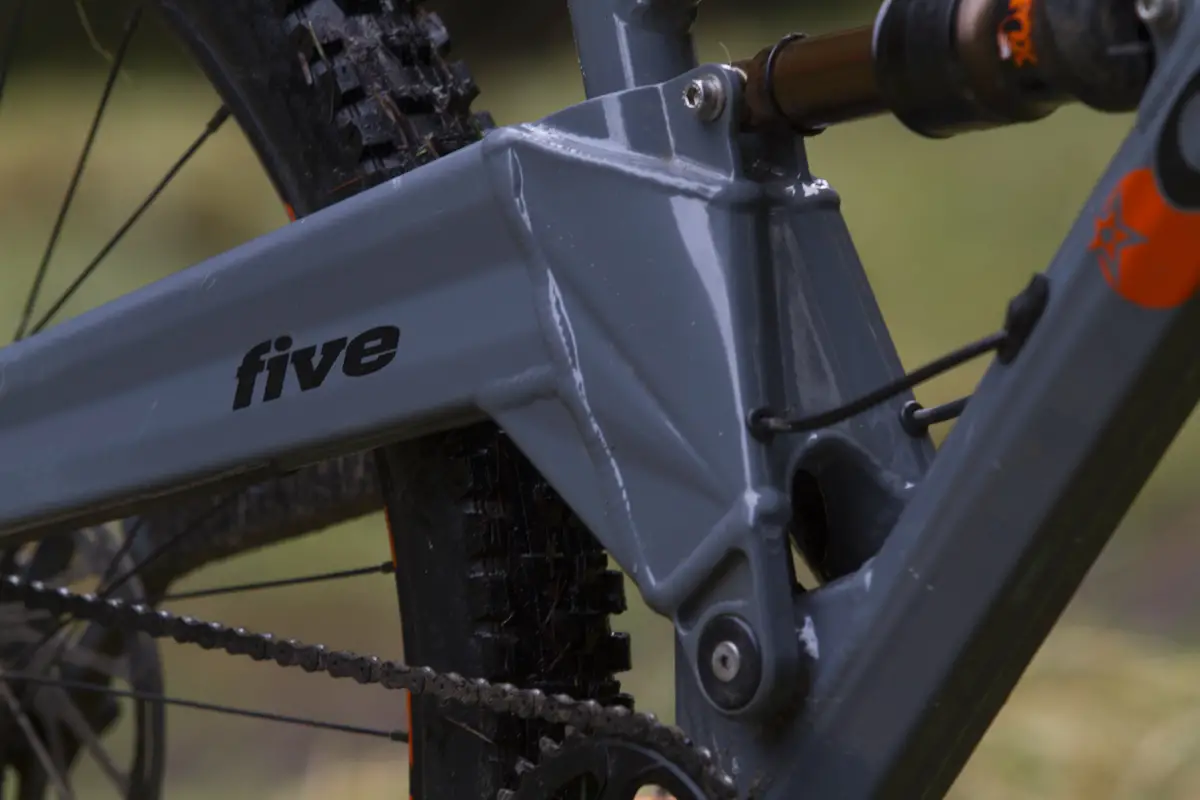
The Bike
The frame, at base level, is a single pivot machine made (mostly) out of folded aluminium sheets. The exceptions are the head tube and seat tube, but there’s no getting away with the very industrial look of the Five (and the rest of its numbered brethren). However, there’s a load more going on than just bending some sheet over the edge of a desk. Looking at the top tube, it’s formed into a keyhole shape in section, but also elegantly curved in section. The machined shock mounts and dropouts have been lightened dramatically over the last couple of Five generations, saving 400g in tubing and component weight on the frame.
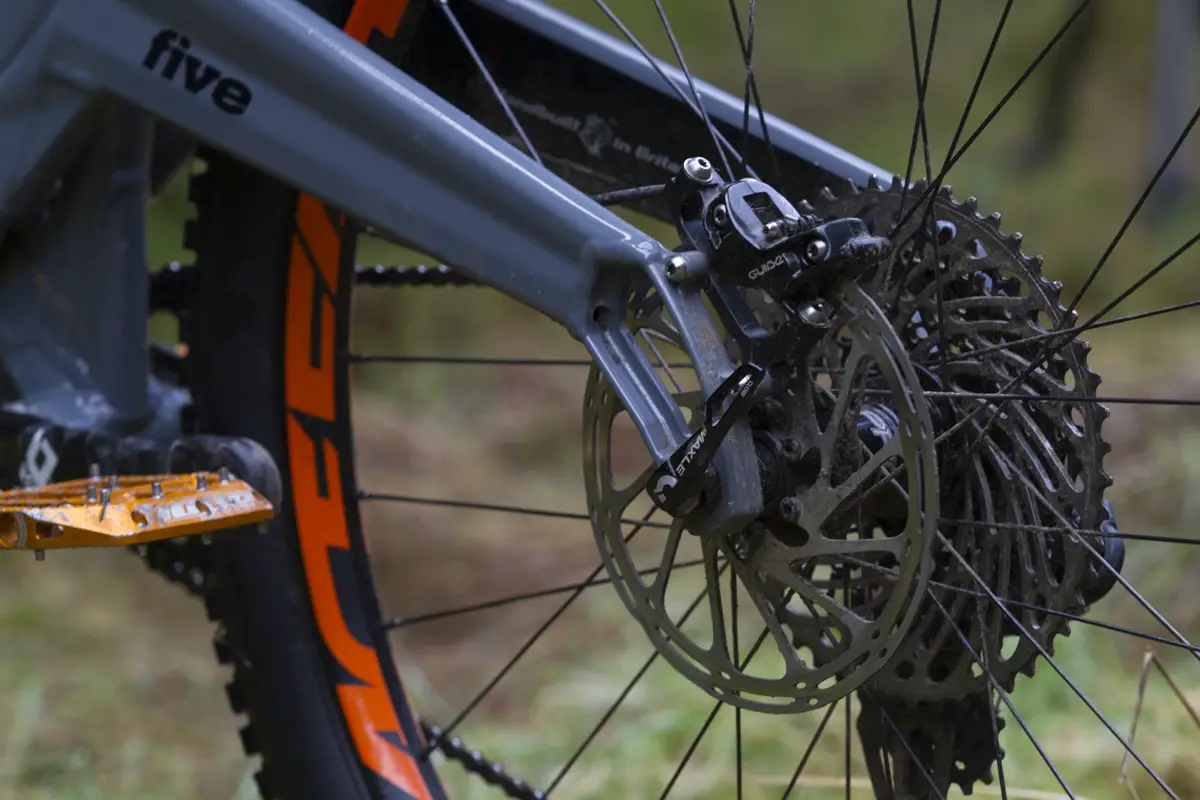
The Five Factory is still in the ‘trail bike’ category, but it’s no featherweight, despite the weight savings. Our Medium test bike with its bling-laden spec came in at 13.13kg. Most riders are probably happy enough to suck that up in return for durability and downhill performance.
One other thing that’s changed over the last couple of iterations of the Five is that, like many of its peers, it has become slacker and longer. This addresses a previous concern of ours where a Five rider often felt a little perched on top of a tall, but capable bike. Now that position has stretched out a little to give more cockpit room and a more ‘in the bike’ feeling.
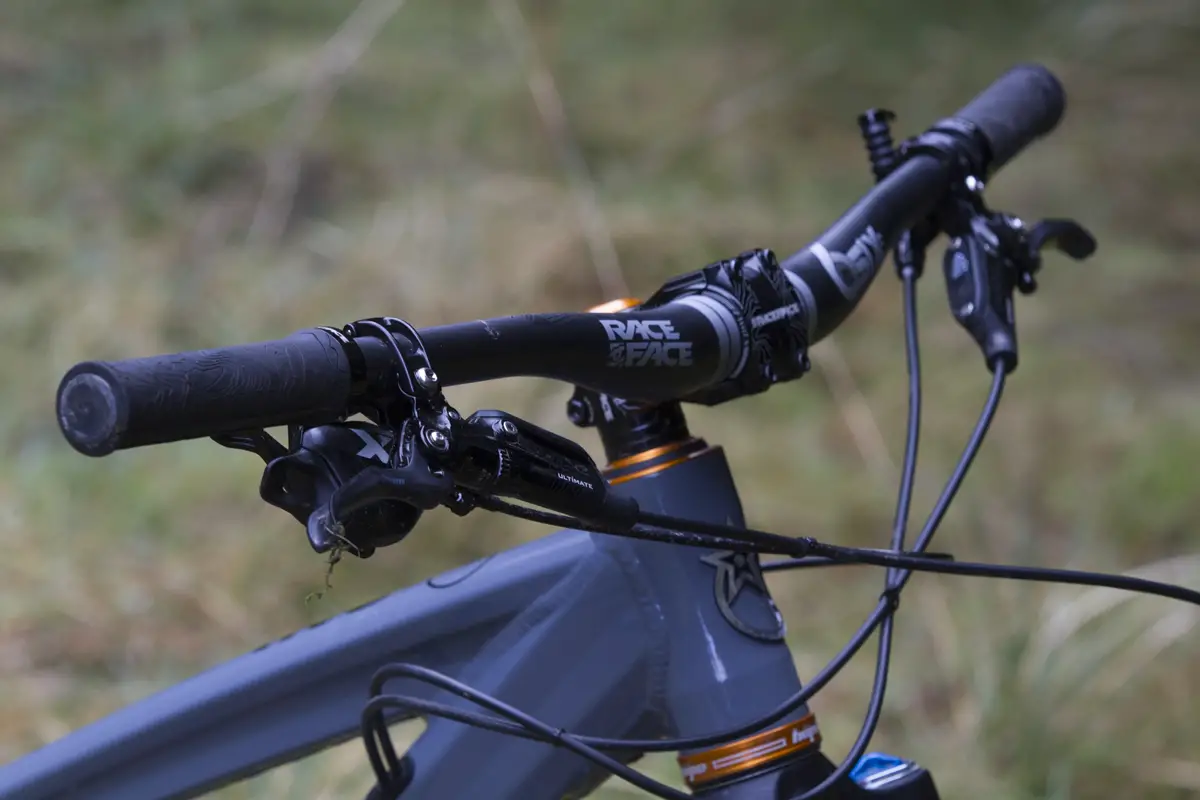
In terms of the cockpit, our Medium test bike offers a properly long 442mm Reach measurement. The Five test bike came setup with a 50mm stem and 800mm wide handlebars, which helps to spread your upper body weight across the entire wheelbase for a very planted feel front to back. For myself and Wil at 175cm tall, the fit was ideal, though Wil did swap in a shorter 33mm Renthal Apex stem to bring the bars in a touch.
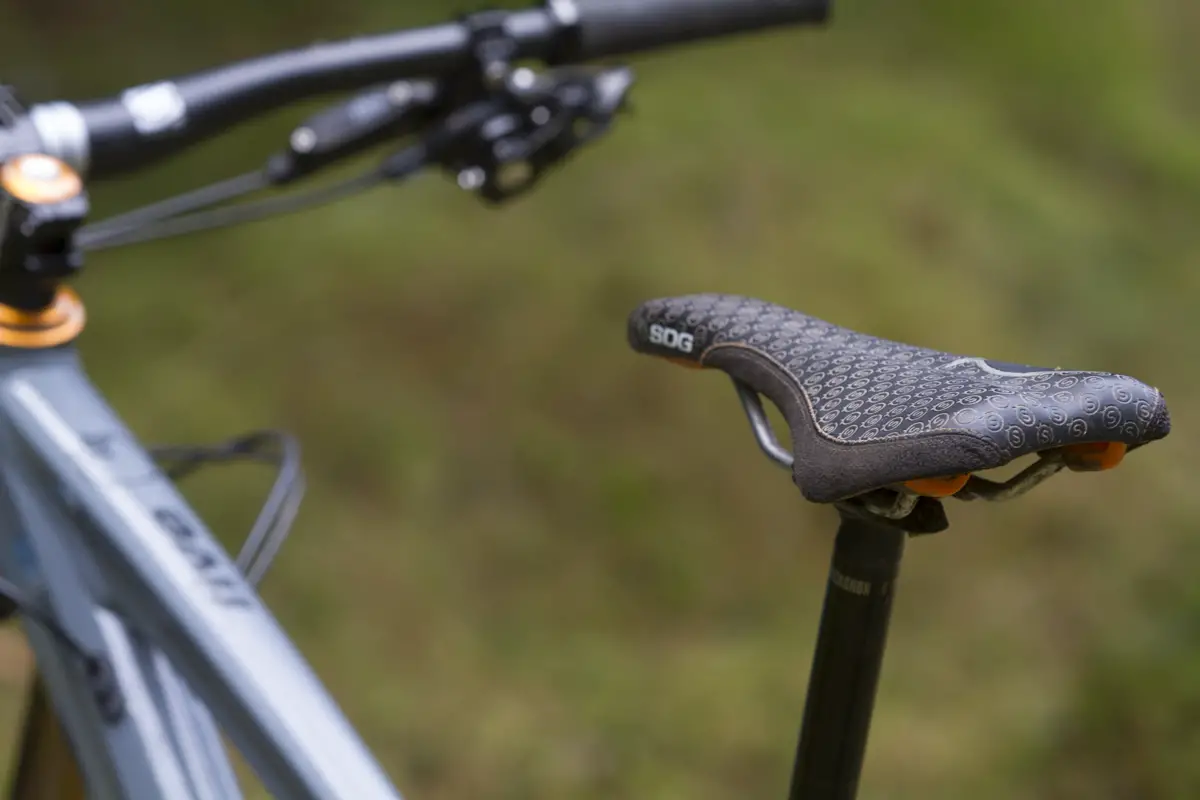
On the note of sizing, the Five offers a broader range of size options than its 29er siblings, being available in both Small and X-Small frame sizes for those who are on the south-end of 170cm.
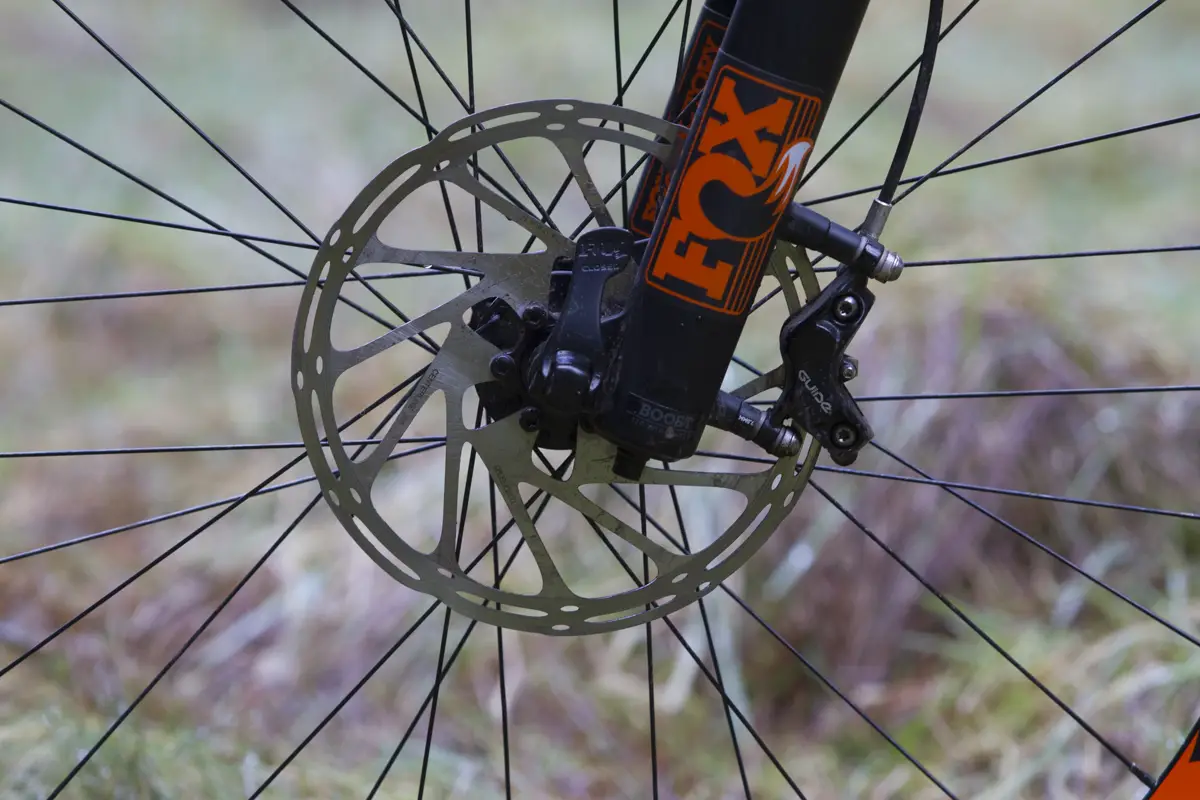
The components on the bike suit its trail/all mountain ambitions (all trail? more mountain?) and the addition of SRAM’s magic 12th cog gives the bike enough range, whether you’re doing endless Lakeland climbs or endless Alpine descents. The Guide brakes bring all that speed to a stop well enough too – though we did seem to motor through the brake pads in the wet, and they did need a secondary bleed within the first few weeks of riding.
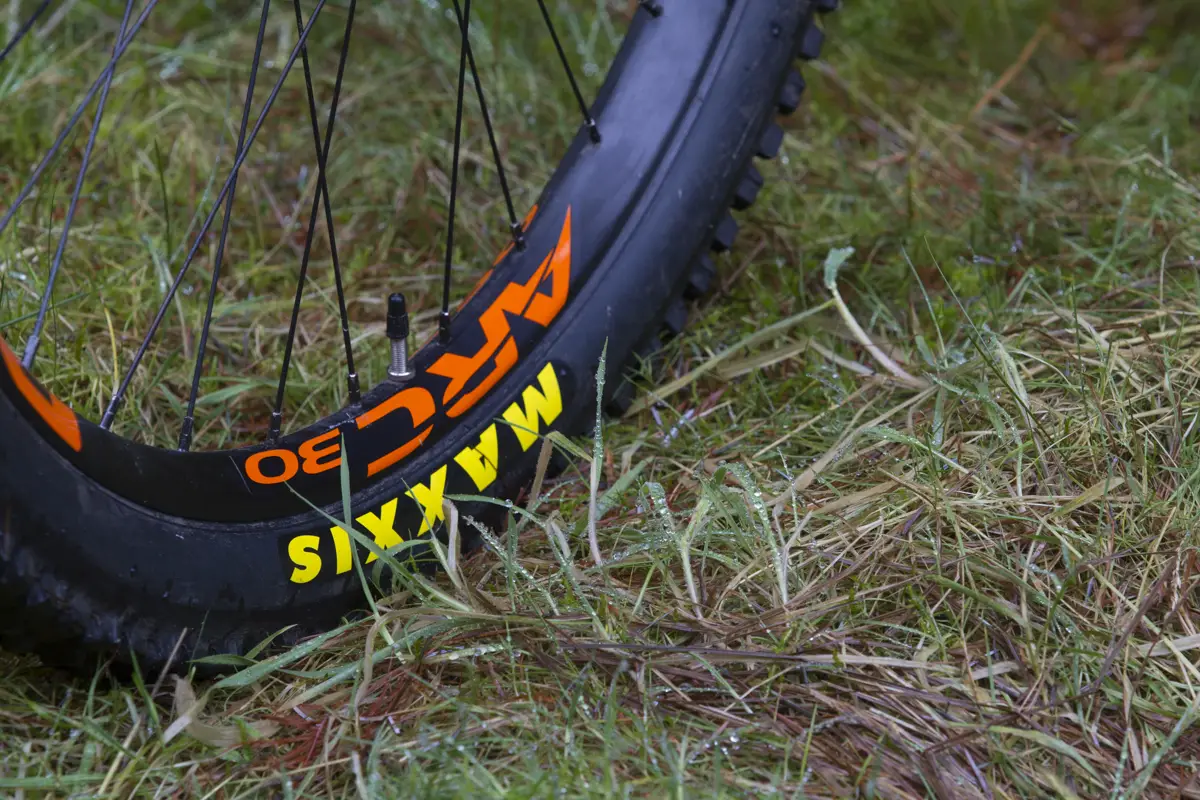
The Easton/Race Face wheels (or whatever they’re calling themselves these days, the branding actually changed during the test) worked well with a proper 30mm internal rim width. They came to us with tubeless tape and valves already installed, though when swapping out tyres and setting up tubeless, they proved faultless in our experience. Orange has also done well on the Maxxis High Roller II tyre choice – these are most excellent treads that suit the Five’s intentions perfectly.
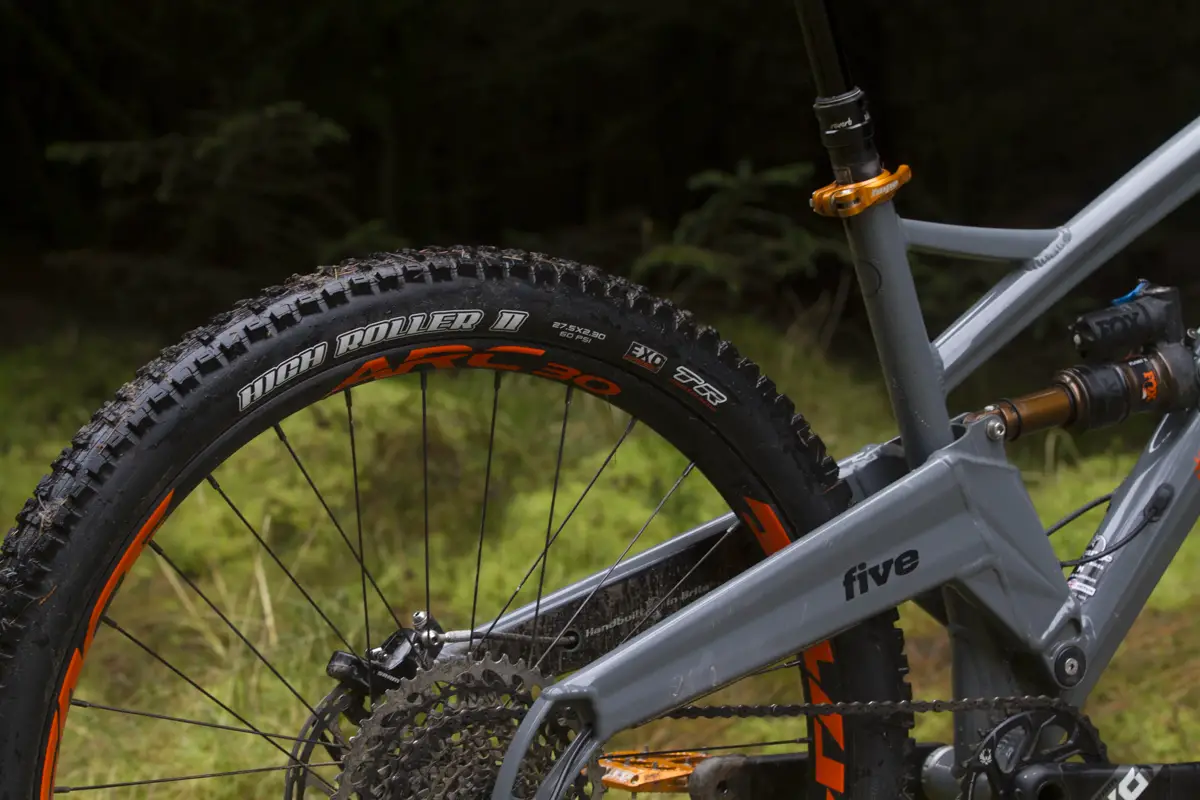
The Ride
We set the shock up with around 30% sag, as per Orange’s recommendations. However, due to the relatively high 2.7:1 average leverage ratio, that means you’ll need a fair whack of pressure inside the Float X. For my 82kg frame that resulted in 260psi, and in Wil’s case (a 70kg featherweight), 230psi seemed to do the trick. There is room for one of two larger volume spacers for the Float X rear shock (a 0.8³ or a 0.92³ spacer), which we’d recommend investigating if you’re over 90kg or a particularly ‘gnar’ rider. Otherwise the necessary pressure required to avoid bottoming out the rear shock will start to get very high.
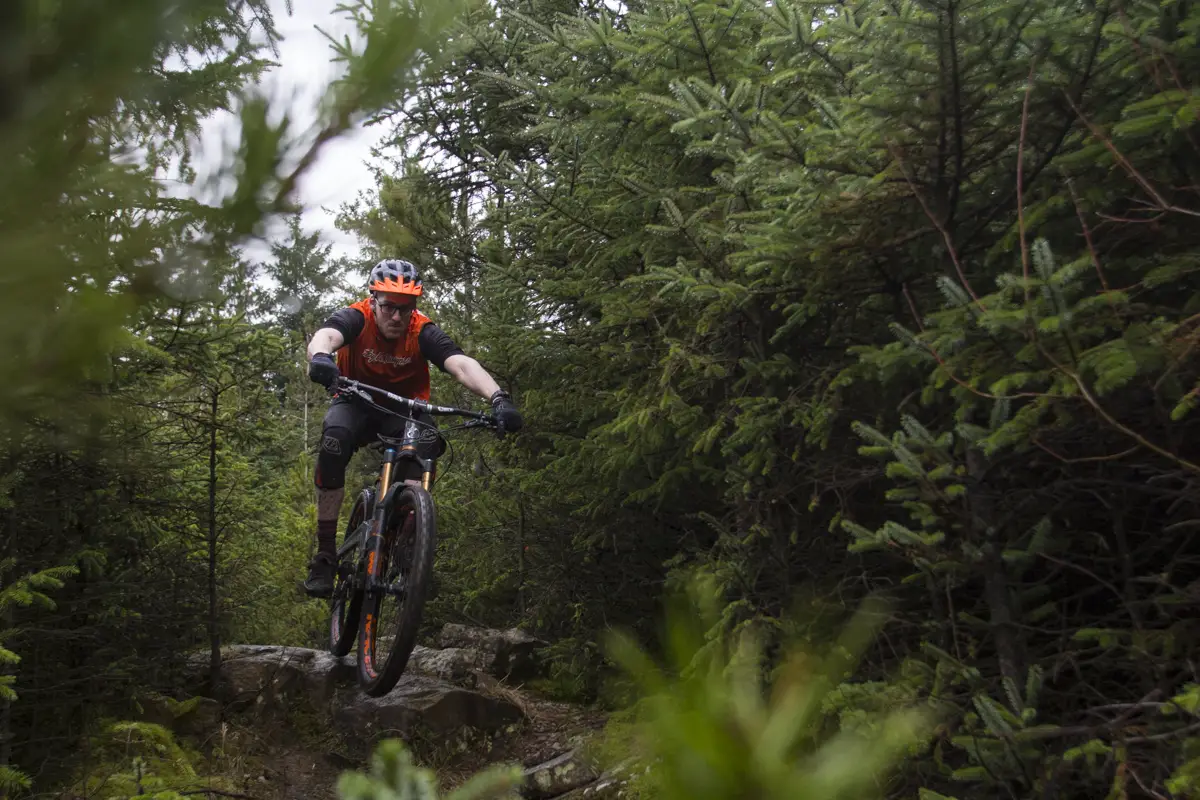
With the stock 0.6³ volume spacer fitted inside the Float X shock and setup at 30% sag, the Orange Five gives a suitably fluttery feel without bottom out – and the absence of that I blame on my lack of radness rather than some shortcomings in the bike. For rolling trails, keeping the power on was a case of just staying on top of the gear and the bike lapped up bumpy trails. On smoother climbs, the Five simply sat there and ground it out. The high-and-forward pivot point doing a fine job of mitigating pedal bob, providing you remained seated.
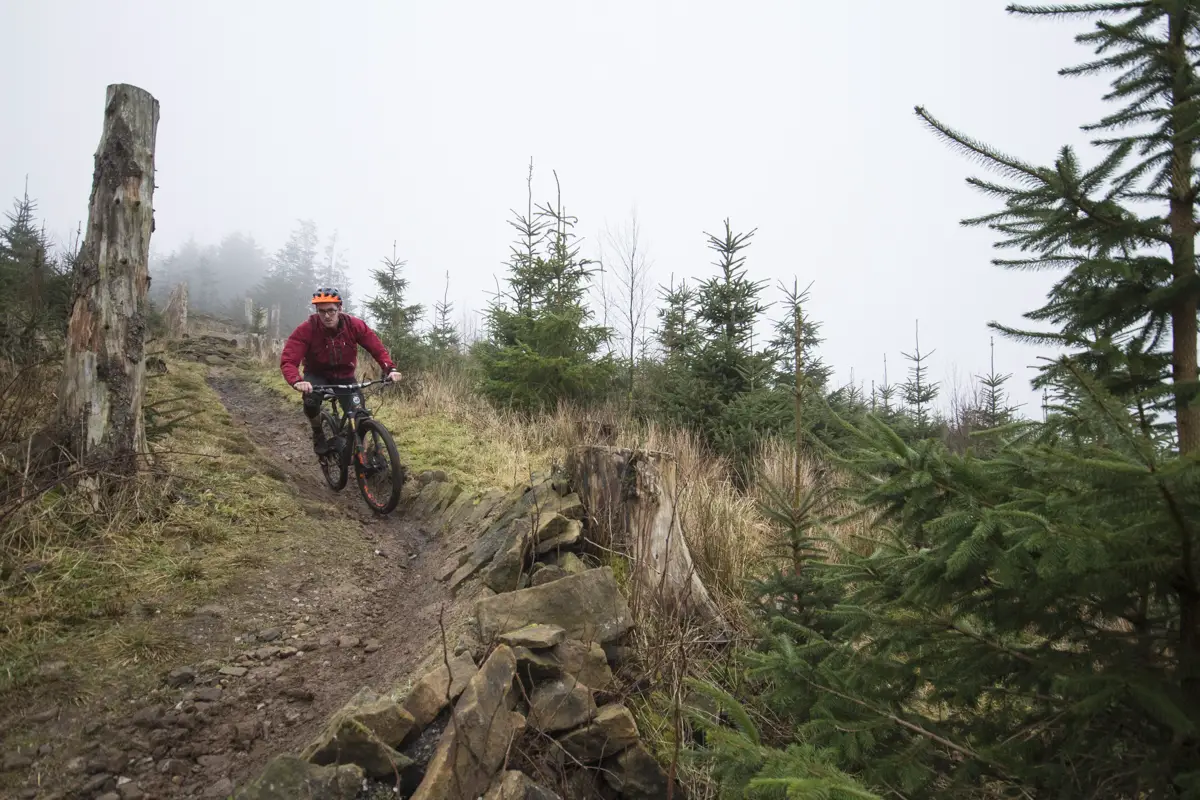
On more techy, steppy climbs, however the bike could often get a little out of step. The single pivot didn’t seem to provide enough support when in between thrutchy moves and the bike would sink into its travel before allowing you to move forward. This slackens everything off, so you could find yourself suddenly shooting forward as the bike struggled to maintain its composure.
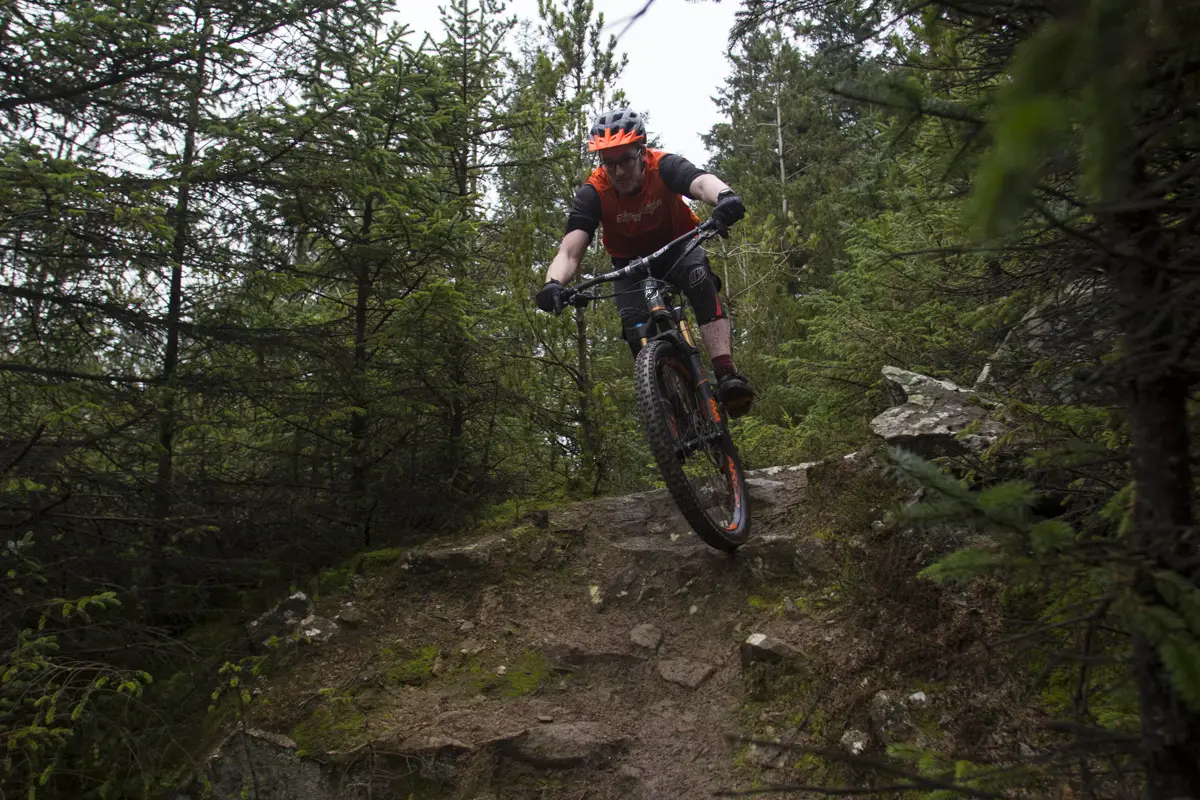
Sure, rocky climbs probably aren’t the main reason you’re looking at a six inch travel rock gobbler, but climbs happen… However you get to the top of the hill, though, whether that’s slow and steady spinning, sweat-summoning thrutching, or on the back of a truck, it’s the downhill that’ll delight you. The Five loves some unpredictability and seems most at home when faced with a river of roots, or a scattering of babyheads. Just hang on, trust the bike, and there are moments of magic to be found.

Stiffness through the Five chassis is excellent, and particularly with the chunky Fox 36 up front. Combine the wide carbon bars, oversized 35mm clamp diameter, and short little stem, and you’ll encounter few issues in tipping the front wheel from side to side. It’s highly responsive, and there is zero complaint from the Five when propping the front wheel into the air when required. Upon landing, that long wheelbase gets longer as the swingarm passes deeper into the travel, offering a steady and unwavering predictability that saved us on numerous occasions when our *ahem* flight path was less than gracious.
The regular spec Fives are great bikes, but the fluttery Float X upgrade just seems to give the chassis an extra 10% of damage limitation that you can keep dipping into, like a sneaky espresso full of raw talent.
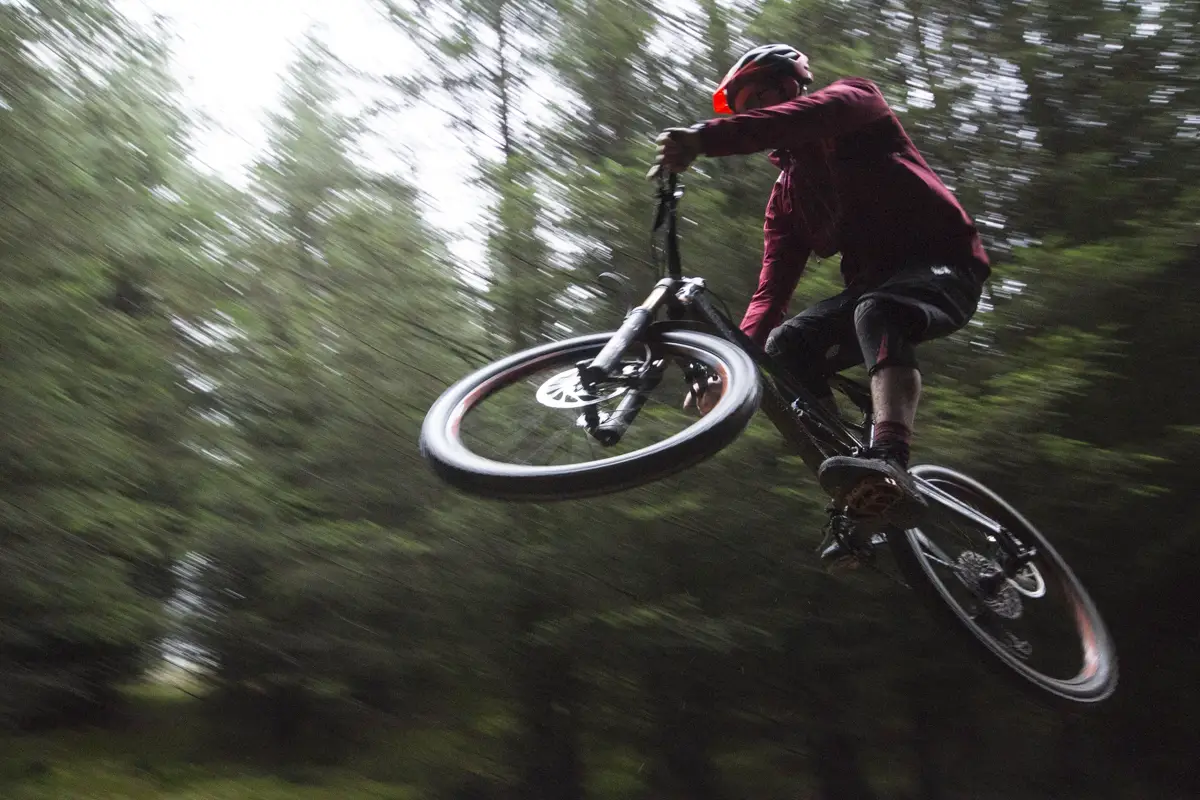
While the Fox 36 delivered front-end predictability, it wasn’t until we removed an air volume spacer that we could get all the travel out of it. Taking out the single spacer made a huge difference to small-bump compliance, allowing the fork to soak up much smaller vibrations that were previously felt through the bars. Overall it still wasn’t as supple as an equivalent RockShox Lyrik fork though. But with the 2018 Fox 36 fork adopting the new Float EVOL air spring, that could very well change.
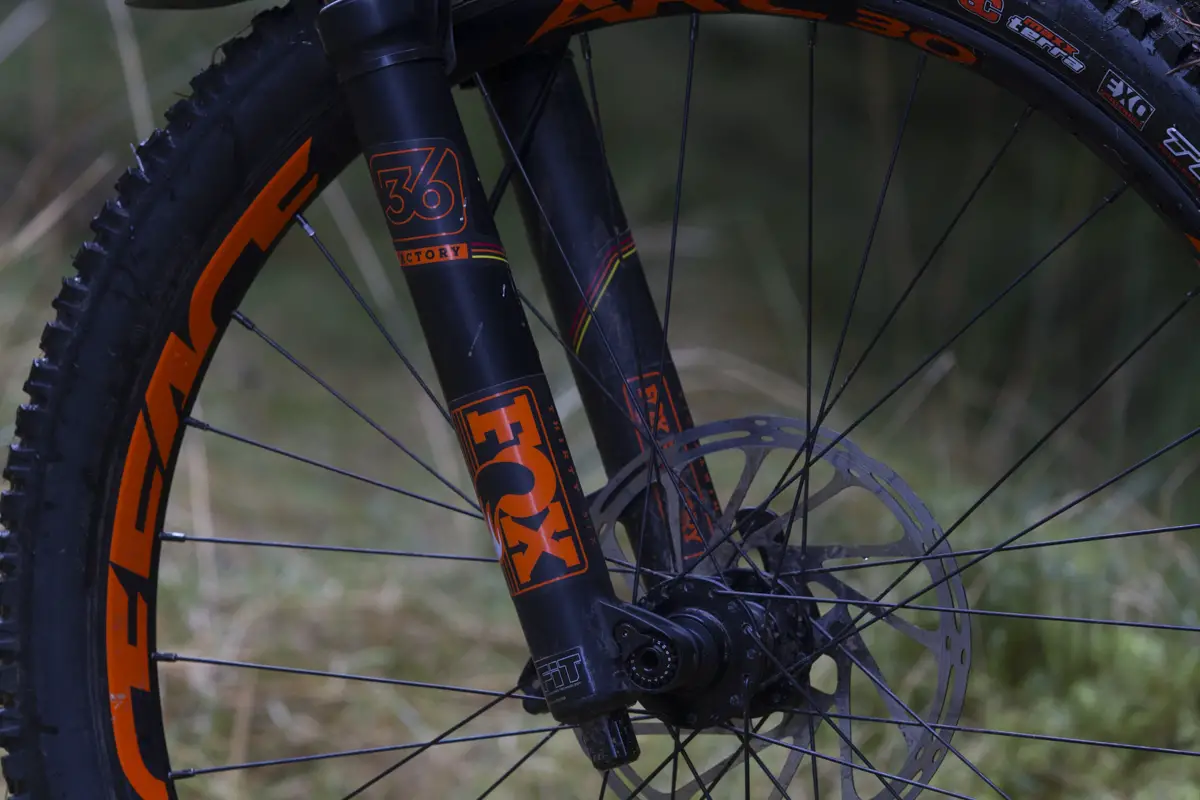
Three Things That Could Be Improved
- The Five really doesn’t like technical climbing. Too much enthusiasm can unsettle it.
- Princess and the pea riders might lament the lack of clever shock linkages.
- Side-exit cables on the top tube interfere when climbing out the saddle – and Internal cable routing is a pain in the arse, but that’s usually the bike shop’s problem, right?

Three Things What We Loved
- At speed, this thing is a steamroller.
- It’s a simple design, but with that comes super durability and serious reliability.
- The Float X and Fox 36 spec really peps up the bike’s ride. It’s supple on smaller stuff, but soaks up bigger hits like a bigger bike.
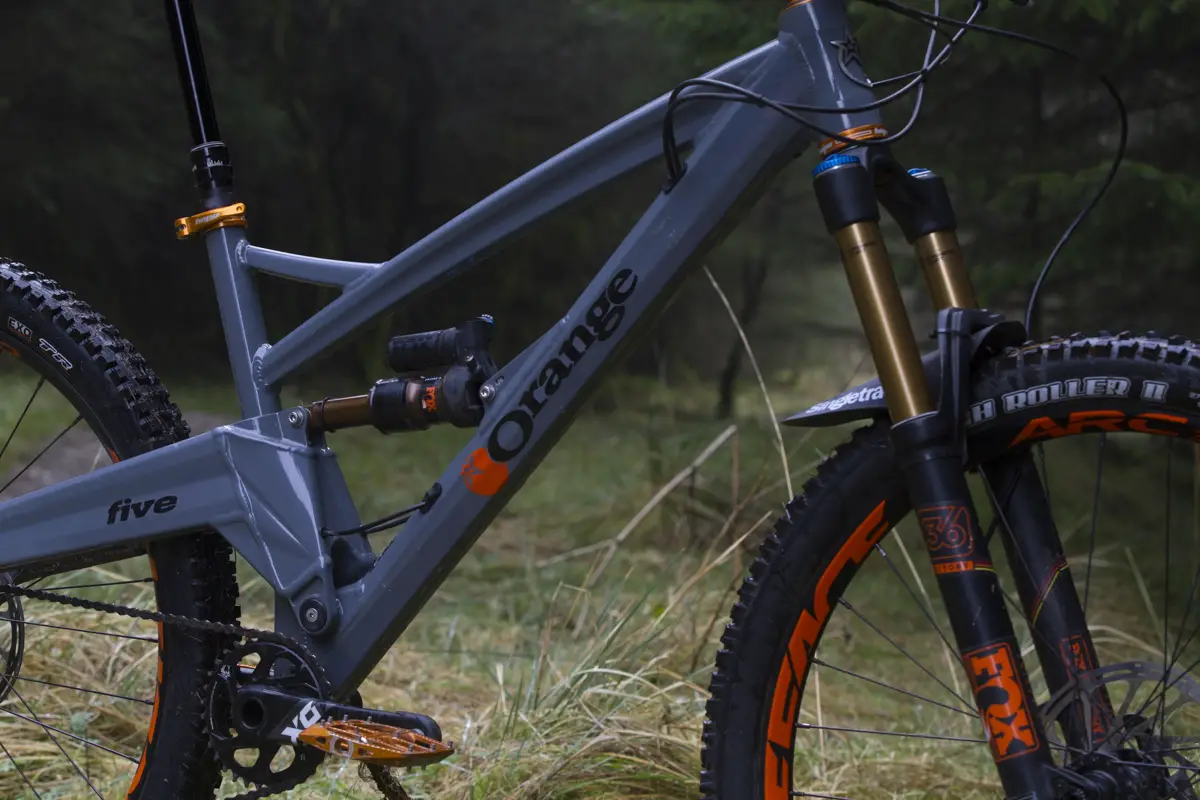
Overall
The Orange Five Factory is a well specced machine, ready to ride/race or rumble right out of the box. If you look on it as a Five-and-a-bit, then you’ll get the kind of idea where this bike is aimed. If you’re after a well made, durable bike for trail centres and the odd trip to Wales, then you’ll be perfectly fine with the stock Five S which starts at £2800. If, however, you’re chasing friends or chasing seconds at events, the spec of the Factory really does change the whole character of the bike. If you thought you knew the Orange Five, think again.
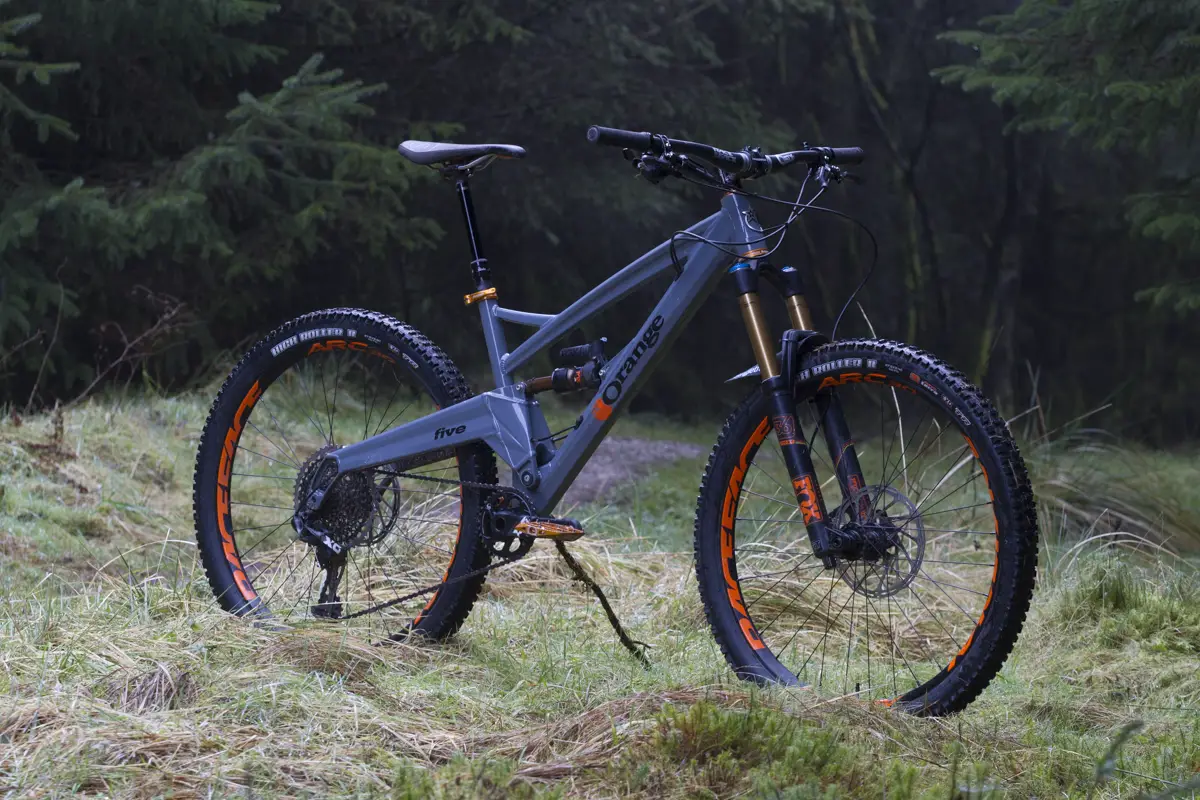
2017 Orange Five Factory Specifications
- Frame // 6061-T6 Monocoque, 140mm Travel
- Fork // Fox 36 Float Factory Series FIT HSC/LSC, 150mm Travel
- Shock // Fox Float X Factory Series EVOL
- Hubs // Hope Pro 4, 110x15mm Front & 148x12mm Rear
- Rims // Race Face ARC 30, 32h
- Tyres // Maxxis High Roller II EXO 27.5 x 2.4in Front & 27.5 x 2.3in Rear
- Chainset // SRAM X0-1 Eagle Carbon, 32t
- Front Mech // N/A
- Rear Mech // SRAM X0-1 Eagle, 12-Speed
- Shifters // SRAM X0-1 Eagle, 12-Speed
- Cassette // SRAM X0-1 Eagle, 10-50t, 12-Speed
- Brakes // SRAM Guide Ultimate, 200mm Front & 180mm Rear
- Stem // Race Face Atlas M35, 50mm
- Bars // Race Face SIXC 35, 800mm Wide
- Grips // Race Face Half Nelson
- Seatpost // RockShox Reverb Stealth, 30.9mm, 150mm Travel
- Saddle // SDG Strange Fly Mtn
- Size Tested // Medium
- Sizes available // X-Small, Small, Medium, Large, X-Large
- Weight // 13.13 kg (28.86 lbs)





